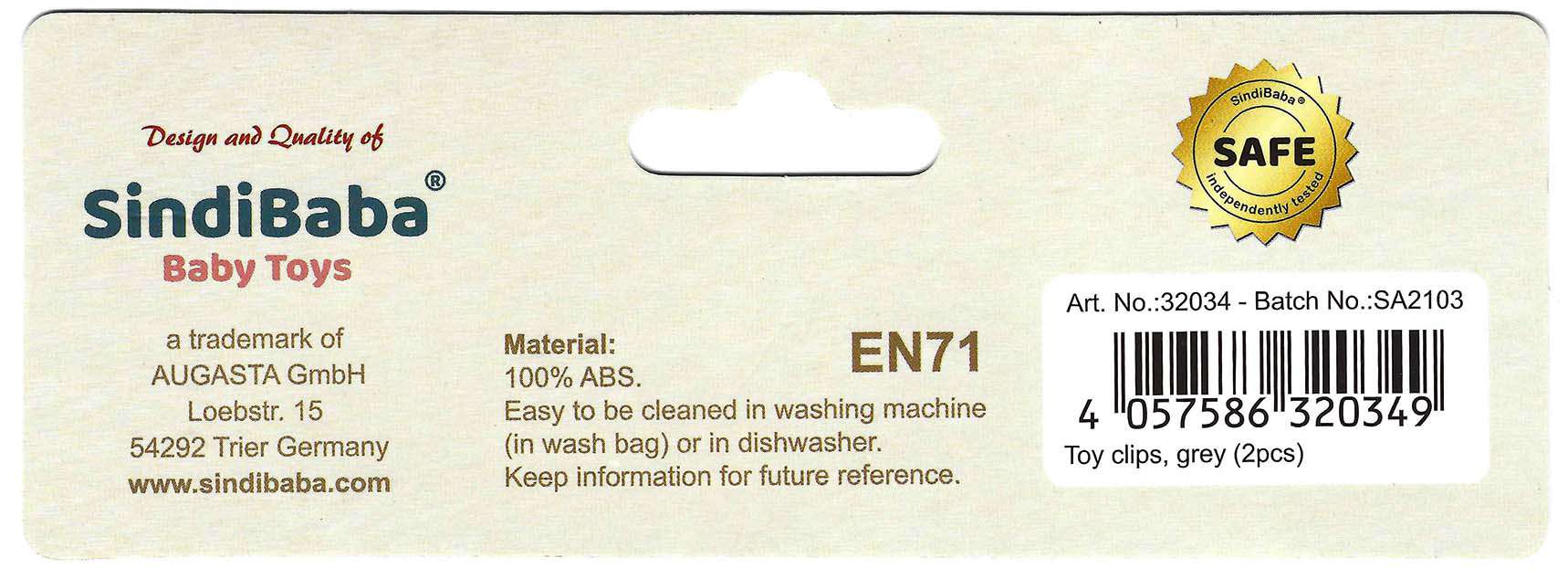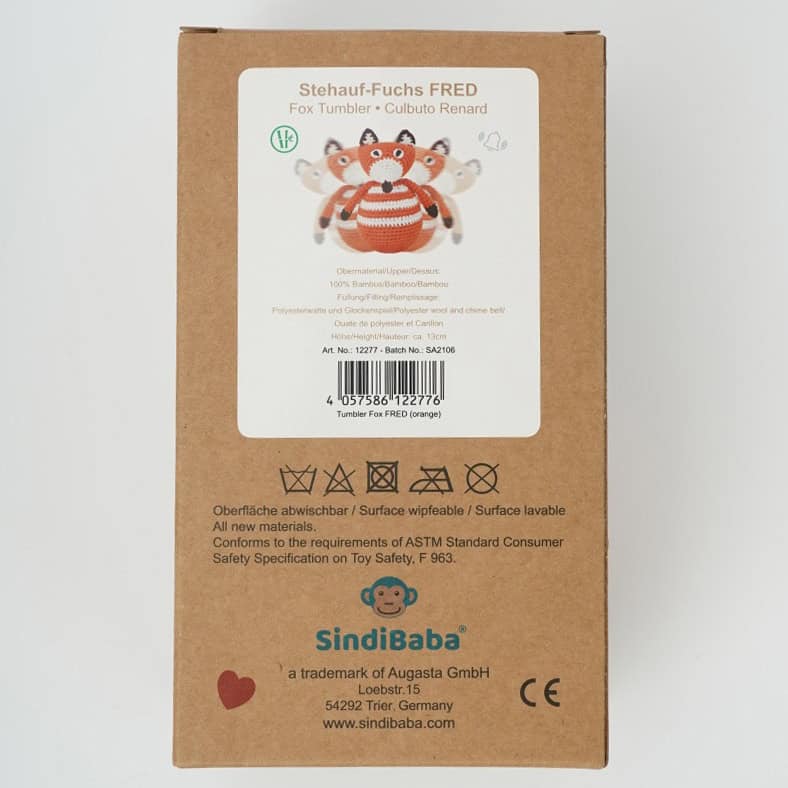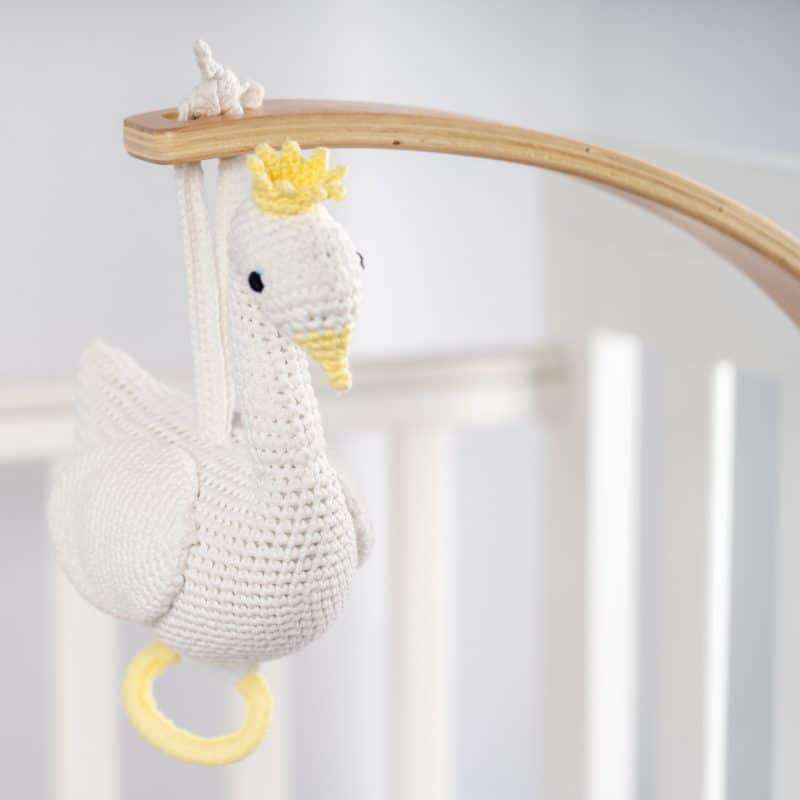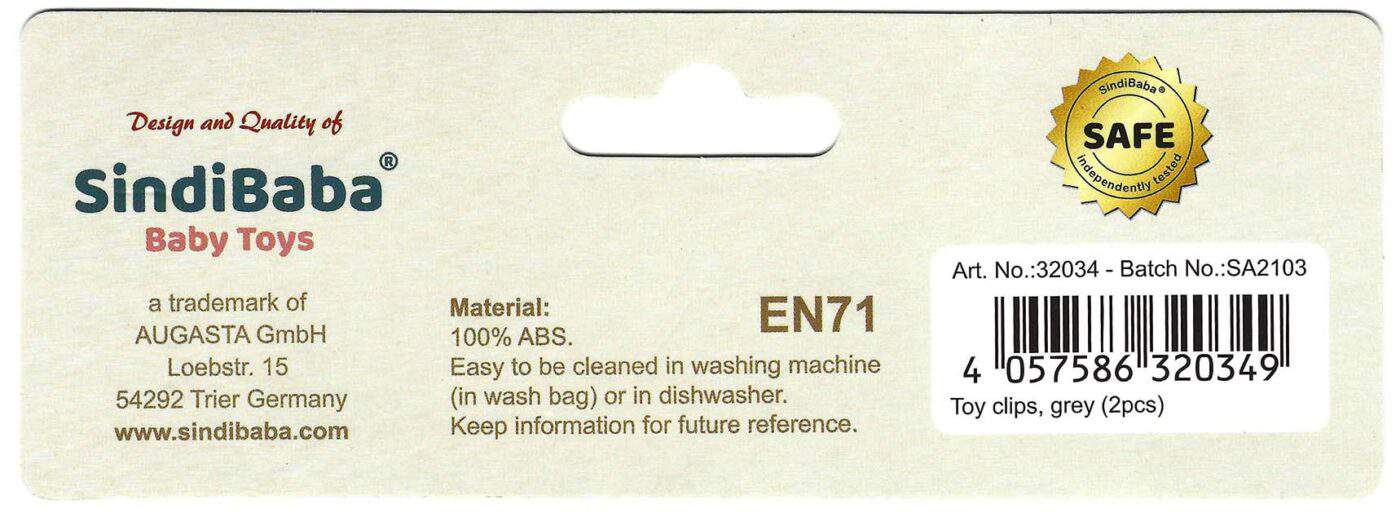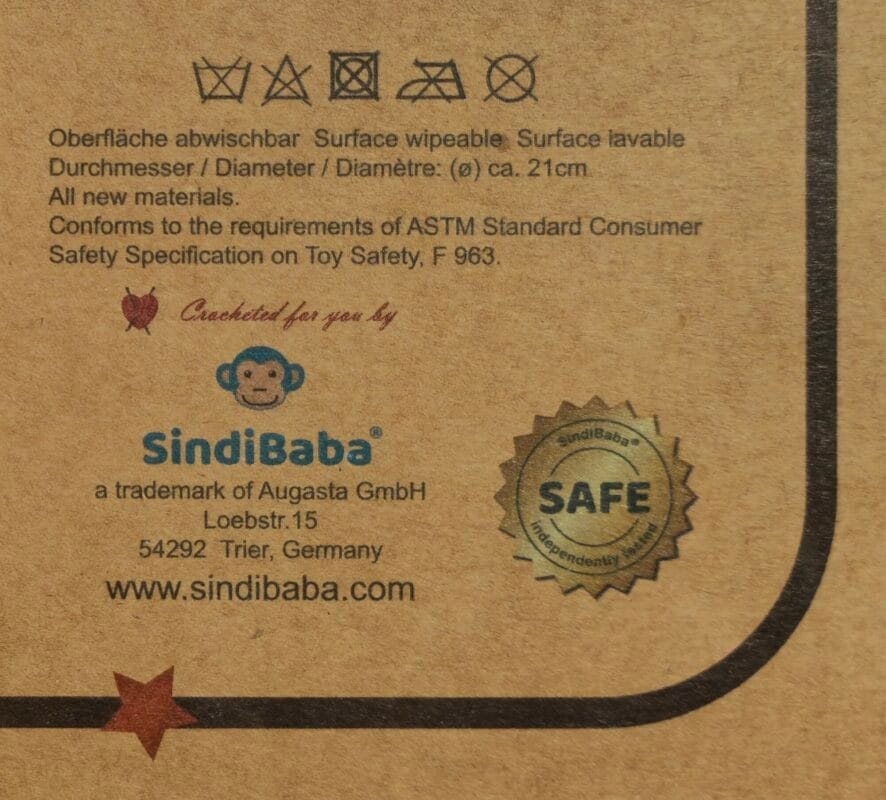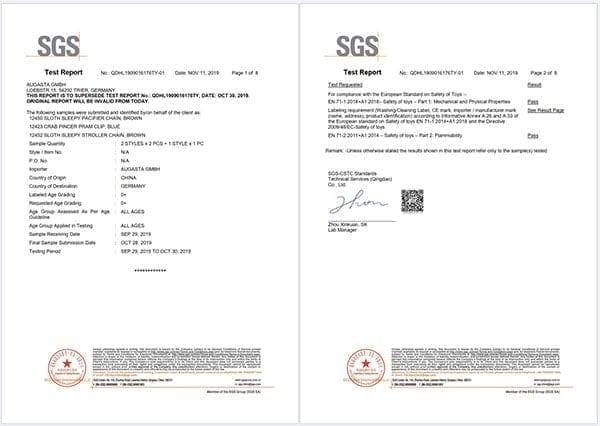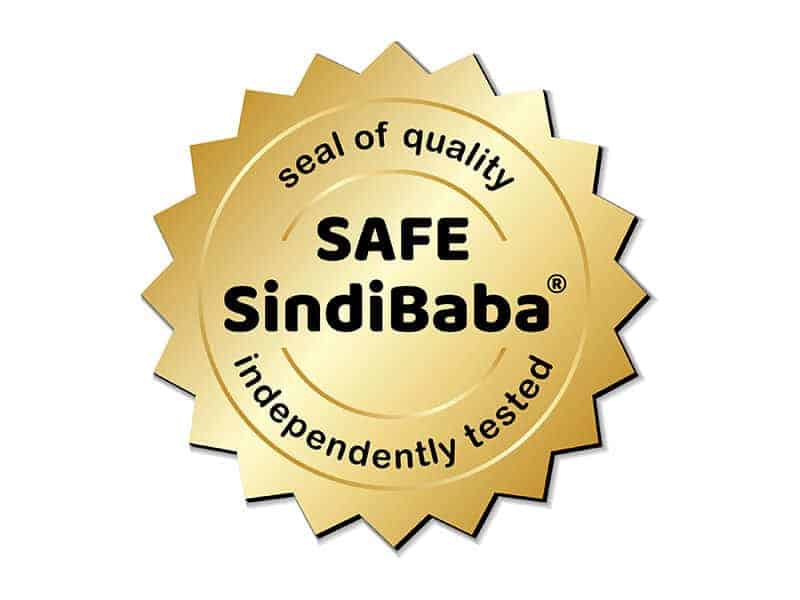2. KNOWLEDGE
Toy Directive 2009/48/EC, DIN EN 71 standards and CE marking

Packaging of a product with prescribed product and manufacturer information.
Here is an example of the Fastening clips in gray – set of 2.from SindiBaba.
What is the Toy Safety Directive 2009/48/EC?
The Toy Safety Directive 2009/48/EC is an EU directive that defines the safety requirements for toys.
This directive ensures that all toys sold in the EU are safe for children.
For a toy to be sold in the EU, it must bear the CE mark (often called the CE logo), among other things. This mark shows that the toy meets the EU’s strict safety requirements.
Product packaging with mandatory product and manufacturer information such as CE marking, address of the distributor, model and batch number, warning and care instructions, etc. using the example of the crocheted stand-up fox FRED from SindiBaba.
Case study: We sometimes receive complaints that the playing time of our music boxes is too long. music boxes is only 2 minutes. The reason for this is the Toy Safety Directive: the length of the wind-up cord is limited to 20 cm so that there is no risk of strangulation for the child.
A longer cord would result in a longer playing time, but would be unsafe and is prohibited by EU standard EN71-3.
Implementation in Germany
Guidelines ≠ Regulations ≠ Laws
Directives set a binding target.
However, they must be transposed into national law (by a specified date).
Minor modifications are possible.
For example, the EU Directive 2009/48 EC (the so-called Toy Safety Directive) is transposed into national legislation in Germany by the Ordinance on the Safety of Toys (2nd ProdSV), which supplements and standardizes the existing national regulations.
The implementation of the directive is monitored by market surveillance authorities, which carry out regular checks to ensure that the toys available on the market meet the legal requirements.
Context of standards, directives and laws
The EU formulates general protection goals in directives, which are specified by specific standards. Example: In the Toys Directive, the EU provides general safety instructions.
However, it does not specify how high a limit value for a toxic substance may be, or how long a wind-up cord on a music box may be without posing a strangulation risk to the child.
In the case of toys, specific standards such as limit values for harmful substances and cord lengths are laid down in the DIN standard DIN EN-71. Standards, such as the DIN standards, are standards that are usually voluntary, but are important in order to comply with the recognized rules of technology.
These standards are often developed by organizations and specialist groups. Harmonized standards gain legal relevance through their publication in the EU Official Journal. This publication triggers the 👉 presumption of conformity which means that the user of the standard complies with the law or directive if they adhere to it.
Presumption effect
Case study DIN EN 71
The European standard EN 71 specifies safety regulations for toys.
All toys sold in the European Union and products that come into direct contact with children must comply with this standard.
The EN 71 standard is based on the European Toy Safety Directive 2009/48/EC.
It is divided into 14 parts.
Parts 1 to 3 are relevant for most SindiBaba soft toys:
- Part 1 Mechanical and physical properties
- Part 2 Flammability
- Part 3 Migration of certain elements (e.g. plasticizers and heavy metals)
Another standard is also relevant for pacifier chains: the so-called “pacifier chain standard” DIN EN 12586.
Obtaining the standard texts is not cheap.
Part 1 of DIN EN 71, for example, costs over €300.
In Germany, the standards are distributed by DIN Media, a publishing house belonging to the DIN Group.
Product packaging with mandatory product and manufacturer information such as address of the distributor, model and batch number, warning and care instructions, etc. using the example of the crocheted 4in1 baby mobile MEERESTIERE from SindiBaba.
SindiBaba uses independent testing institutes such as SGS, Eurofins and Intartek to assess the risk of its products.
Meaning of the CE marking
With the CE marking, the manufacturer confirms that the product complies with the EU Toy Safety Directive 2009/48/EC, i.e. that it meets all EU safety requirements.
The manufacturer assumes responsibility for compliance with the resulting standards.
The CE marking is mandatory and is the only marking that certifies the conformity of the product with the EU standards.
Consequence: A toy without a CE mark may not be sold in the EU. The Toy Safety Regulation does not require an independent body to carry out CE conformity testing of the products.
The manufacturer can carry this out themselves.
Conclusion
- The Toy Safety Directive 2009/48/EC ensures that toys in the EU are safe.
- Every toy must bear the CE mark, which shows that it meets all relevant safety standards.
- Standards help to assess whether a product is compliant and provide concrete specifications and instructions.
- Manufacturers can check this conformity themselves.
An independent body is not necessarily required for the test.
At SINDIBABA, we have our toys tested by independent, accredited testing institutes.
This ensures that our baby and toddler products meet the highest quality and safety standards.
With the SAFE SindiBaba quality seal on the product packaging, we show that we go above and beyond the legal requirements when it comes to compliance with safety standards.
So you can be sure that your child will play safely and securely with our toys.


